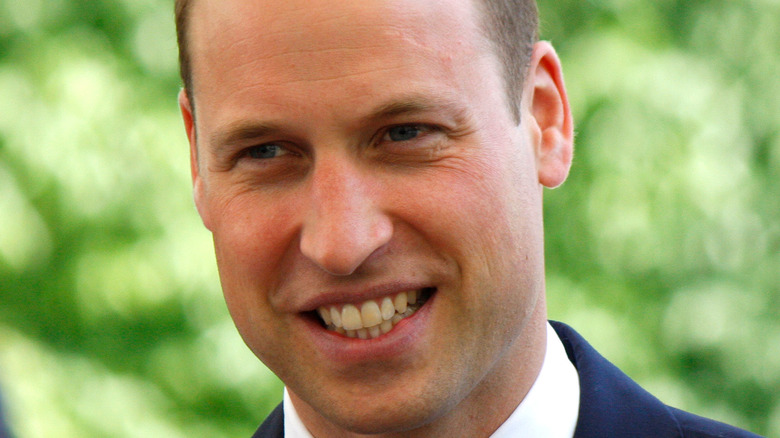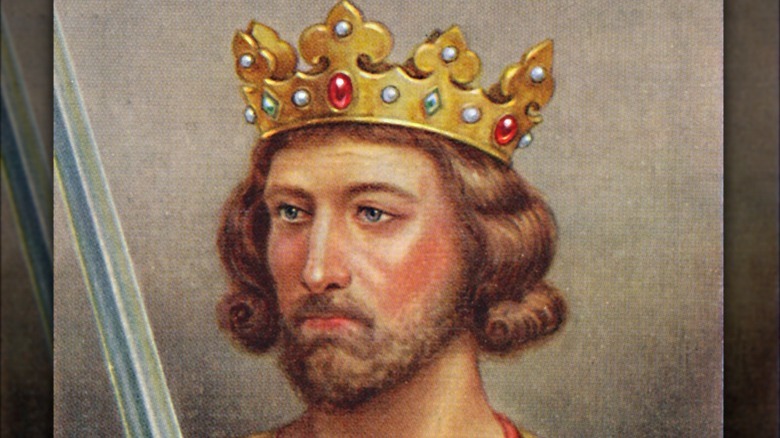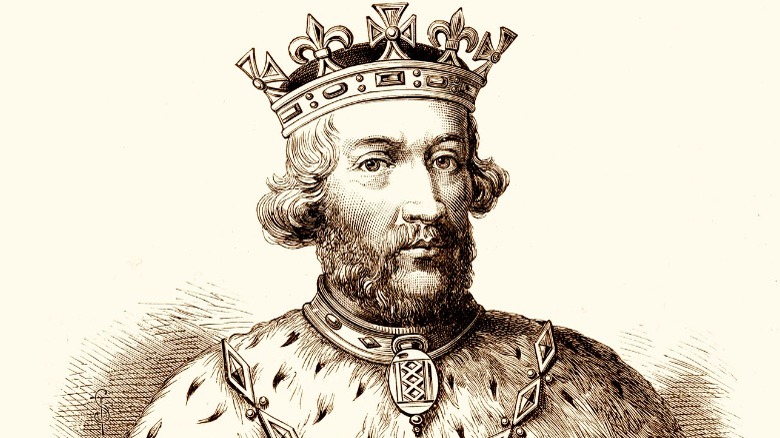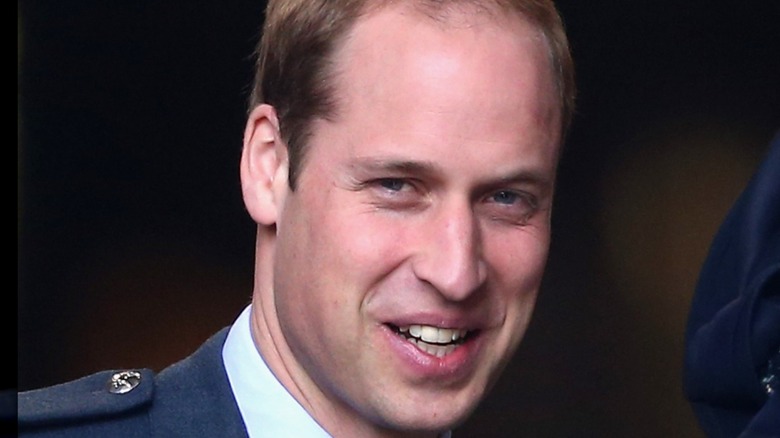Why Is The British Heir Apparent Titled The Prince Of Wales?
Following in his father's footsteps, in 2022, Prince William became the latest member of the royal family to hold the title of Prince of Wales. The practice of giving this royal honor to the heir apparent dates back centuries, though it has been exclusively used for male heirs (via the BBC). Prince William's grandmother, Queen Elizabeth II, never held the title of Princess of Wales, which has been used solely by the wife of the Prince of Wales thus far.
The title of Prince of Wales isn't given to the heir apparent at birth. According to Town & Country magazine, it must be bestowed by the ruling monarch to their heir. For King Charles III, he became recognized as the Prince of Wales in a special ceremony in 1969, when he was 20 years old, per the BBC. His mother had previously announced her intentions to make him Prince of Wales when he was only 9 years old, per Town & Country. And while dozens of English royals have held the title over the years, it originates from a time of war and conflict.
The origin of the Prince of Wales
Originally, the Prince of Wales was, well, actually Welsh. But the Welsh royal family suffered several crushing blows as England sought to gain control over the region — first at the hands of King Henry III and then his son Edward I (via Britannica). Llywelyn Ap Gruffudd was the only native royal that the English acknowledged as the Prince of Wales. He died in the Battle of Orewin Bridge in 1282, slain by Edward I's troops, according to Historic UK. When Llywelyn Ap Gruffudd's dead body was discovered, his head was removed and given to King Edward I (pictured above). The king then had the severed head displayed in public at the Tower of London.
Llywelyn Ap Gruffudd's brother David (also known as Dafydd) tried to carry on the family title and the fight against the English, but he ended up suffering a gruesome fate a few months later when he was captured by the English and hanged. His head was placed beside his brother's at the Tower of London.
The first English Prince of Wales
After ending Welsh resistance to English rule, Edward I revived the title of Prince of Wales. He gave this honor to his son Edward when he was 16 years old in 1301, according to the official site for the Prince of Wales. Edward soon became King Edward II (pictured above) after his father's death in 1307. But in a move of extreme royal intrigue, Edward II was forced out of power by his own wife, Isabelle of France, who had their son assume the throne as Edward III. Soon after, Edward II was murdered at Berkeley Castle, where he had been imprisoned.
The next Prince of Wales, Edward II's grandson Edward, was granted the title in 1343. He was the son of Edward III and Philippa of Hainault. He may have been the second English royal to serve as the Prince of Wales, but he is largely remembered as the Black Prince. Some say that the moniker came from the color of his armor, while others suggest it came from his vicious treatment of the French during the Hundred Years War, per BBC. In any case, this Prince of Wales never made it to the throne.
The Prince of Wales title turned into tradition
After the Black Prince, it became a tradition for the heir apparent to receive the title from the ruling monarch. Once the heir assumes the throne, they lose the title, but they are allowed to bestow it on their heir. This pattern has repeated itself countless times since Edward I began giving this title to English royalty in 1301 (via the Prince of Wales website).
Not everyone loves the title Prince of Wales, however. In the early days of the Prince of Wales, the title holder actually had more of a direct connection to the country and people of Wales (via Town & Country). But for some time, some of these princes never even set foot in Wales. More recently, there has been a movement in Wales to retire the title since it doesn't reflect Wales' position as a modern and democratic nation, per Nation Cymru.
The current Prince of Wales may be able to win over some of his opposition. Prince William and his wife previously lived in Anglesey, a Welsh island, while he served as a search and rescue pilot with the Royal Air Force. He has also promised to make changes to the office of the Prince of Wales.



